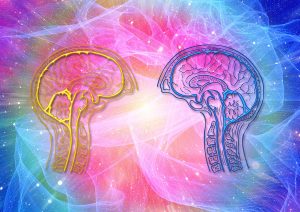
Two ambitious experiments aimed at uncovering the seat of consciousness in the human brain have failed to meet their goals, resolving a wager that was a quarter-century in the making. Although it is unusual to be reporting on the failure of a series of experiments, it is important in regards to this bet, one made between a neuroscientist and a philosopher that highlights the elusive nature of human consciousness.
Having seen major advances in the technology used to study neuroscience through the 1980s, neuroscientist Christof Koch assumed that progress on cracking the secret behind human consciousness would be accelerated, with the science of what makes each of us “us” laid bare within his own lifetime. However, philosopher David Chalmers was more skeptical about such a breakthrough. To that end, in 1998 Koch bet a case of wine that science would uncover the mechanism behind consciousness within 25 years; Chalmers met that bet, saying that the mystery would remain.
Although the two would eventually forget their wager, the bet resurfaced in a 2018 article by Per Snaprud, a journalist who was curious about what progress had been made in the field of consciousness research, reminding the pair about their then-20-year-old challenge.
At the time, both Chalmers and Koch were involved in an ambitious project supported by the Templeton World Charity Foundation that was aimed at accelerating consciousness research: the project planned to set up a series of “adversarial” experiments that would test the leading hypotheses; the adversarial part was to involve rival researchers in the design of each of the studies. “If their predictions didn’t come true, this would be a serious challenge for their theories,” Chalmers explained.
The project tested two of the leading hypotheses on human consciousness: the first of these, called the integrated information theory (IIT), posits that consciousness is a structure of sorts that is formed by a specific type of connection between neurons in the brain’s posterior cortex that is only active as long as a specific experience, such as looking at a picture or listening to a sound, is being perceived.
The second idea, called global network workspace theory (GNWT), is hypothesized to occur at the opposite end of the brain, in the prefrontal cortex; this model posits that consciousness emerges from the broadcast of information through an interconnected network, but this transmission of consciousness occurs only at the beginning and end of a perceived experience.
Although the experiments found signs that are indicative of both IIT and GNWT-like activity in the subjects’ brains, the findings from all six experiments failed to match the expected patterns needed to validate either hypothesis.
“This tells us that both theories need to be revised,” according to study co-author Lucia Melloni, a neuroscientist with the Max Planck Institute for Empirical Aesthetics. However, “the extent of that revision is slightly different for each theory”.
“With respect to IIT, what we observed is that, indeed, areas in the posterior cortex do contain information in a sustained manner,” Melloni explained, adding that their data seems to suggest that the ‘structure’ that the theory relies on is being recorded. However, evidence of sustained synchronization between different areas of the brain that had been predicted was not forthcoming.
In regards to GNWT, evidence of the information being broadcast that was predicted by the hypothesis had been found, but it only occurred at the beginning of the subjects’ experience, but not at the end. Although this suggests that the GNWT hypothesis is weaker than IIT, it “doesn’t mean that IIT is true and GNWT isn’t,” according to Melloni; rather, the mechanisms of both ideas need to be reworked in light of the new data.
Needless to say, research into the phenomenon of consciousness—one of humankind’s most ancient and enduring mysteries—will continue. However, the deadline set for Chalmers and Koch’s bet has passed; ahead of the annual meeting of the Association for the Scientific Study of Consciousness (ASSC) Koch bought a case of Portuguese wine to honor their wager. But would he make that bet again?
“I’d double down,” he replied. “Twenty-five years from now is realistic, because the techniques are getting better and, you know, I can’t wait much longer than 25 years, given my age.”
“It was always a relatively good bet for me and a bold bet for Christof,” remarked Chalmers, who is now co-director of the Center for Mind, Brain and Consciousness at New York University. However, Chalmers is confident that an answer will be found someday. “There’s been a lot of progress in the field.”
Subscribers, to watch the subscriber version of the video, first log in then click on Dreamland Subscriber-Only Video Podcast link.
Contact with ~95% probability in 2027, based on Bashar video I posted here yesterday. The tectonic shift of disclosure has been under way the last few weeks.
Here’s another big step forward:
https://www.youtube.com/watch?v=wXB0OdES3v4&ab_channel=TheGoodTroubleShowwithMattFord
https://www.youtube.com/watch?v=lIPPlpLq_3Y&ab_channel=NewsNation
Actually, huge.
I actually tried to tackle consciousness on my old website several years ago, along with Michio Kaku’s take on on it. Seeing and remembering what I wrote back then, my feelings are the same: ‘Consciousness’ may be more of a field that we tap into…
https://www.youtube.com/watch?v=GGIsqQ_WXyk
http://www.cosmiclibrarian.com/blog.html